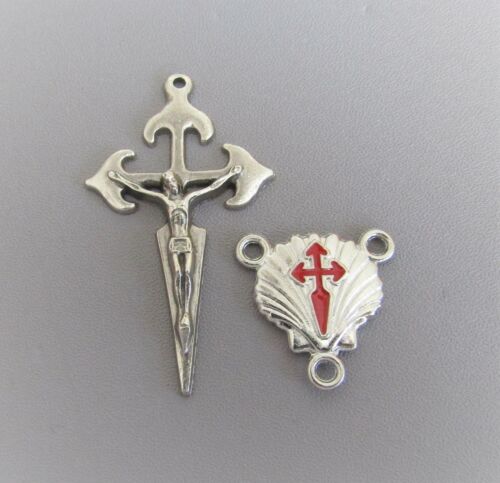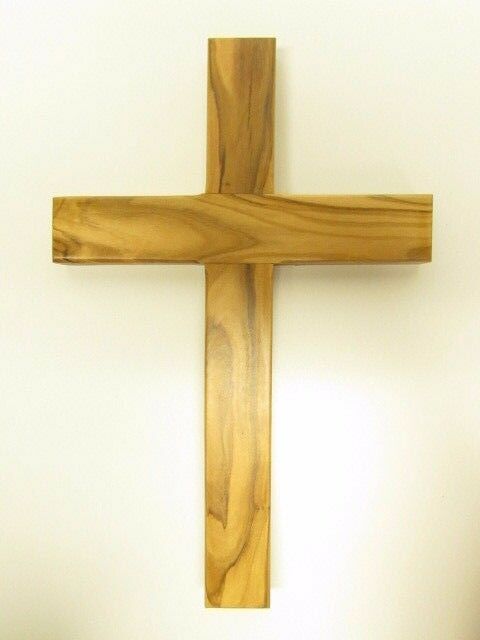-40%
ANTIQUE LATE VIKING-AGE c.12-13th CENTURY RELIQUARY CROSS with SILVER ENGRAVING
$ 105.07
- Description
- Size Guide
Description
Antique medieval large (approx. 1-3/4" tall with rotating bale; weight approx. 9g) two-sided Reliquary Cross pendant featuring engraved images of the Cross on both sidesfilled with silvery metal alloy, a mixture of metals known as niello (partially preserved).
Reliquary crosses of similar design described in catalogs are dated c.12-13th century (please see the last two pictures for a reference). Such objects are often called "Viking" because they are believed to have traveled across Europe during the Viking Age, a period of Nordic military, mercantile and demographic expansion via the trade route called "From the Varangians to the Greeks" connecting Scandinavia, Baltic countries, Kyivan Rus and the Byzantine Empire.
The frame of the pendant
offered for sale appears to have been hand made from bronze or similar historical copper alloy of unknown composition. It shows marks from hand grinding tools of the master coppersmith. The item shows visible signs of wear and aging consistent with its centuries-old age, such as reduced quality of artwork, deformations of the original shape, dents, chipped off or corroded particles of metal and niello, scratches and patches of patina/oxidation.
Some of the outside original thick patina has been removed using a complex procedure of gentle cleaning and polishing.
The halves of the Cross appear to be locked, and are not opening or moving.
The inside of the necklace bale shows signs of wear consistent with long continuous wearing.
The size of the pendant is shown on the photographs for this listing.
This Cross sold as a collectible object, and is not recommended for wearing as jewelry because of potential fragility and unknown chemical composition of the engraving.
The Reliquary appears to be locked and sealed between the halves; therefore, it could not be excluded that it was never opened since the original placing of a relic inside and sealing of the halves with a special wax. Such relics would most likely be tiny pieces of the True Cross, or something that was touching them. Since the halves of the Cross are not opening, I do not have any scientific means to find out if the wax is authentic, and if there is any relic inside the reliquary. To me, it is a fascinating mystery making it so valuable.
Pectoral Reliquary Cross (known as "Engolpion" or "Encolpion" in the Eastern Orthodox and Eastern Catholic Churches) was originally worn by priests or bishops. The tradition started likely c. 9th century when relics of the True Cross became venerated, and were carried in cross-shaped reliquaries like this Cross offered for sale, often made from silver or gold, and decorated with enamels, niello, and precious stones.
Niello is a mixture of silver and other metal sulphides used as an inlay on engraved metal jewelry. The ancient Egyptians are credited with starting niello decoration, which spread throughout Europe during the late Iron Age, and is common in Anglo-Saxon, Celtic, Byzantine and other types of Early Medieval jewelry.
Subsequently, laymen Orthodox and Catholic faithful also started wearing Cross-shaped reliquaries with small pieces of various relics (usually associated with Christian Saints). The True Cross is the name for physical remnants from the cross upon which Jesus Christ was crucified. According to the ancient Church tradition, the True Cross has been discovered by Saint Empress Helena during her pilgrimage to the Holy Land in year 326-328. Many Catholic and Orthodox churches possess fragmentary remains that are by tradition believed to those of the True Cross. Saint John Chrysostom relates that fragments of the True Cross were kept in reliquaries "which men reverently wear upon their persons". A fragment of the True Cross was received by King Alfred from Pope Marinus I (Anglo-Saxon Chronicle, year 883). Most of the very small relics of the True Cross circulated in Europe came from Constantinople, the city that was captured by Crusaders in 1204.
Please examine all photographs carefully and do your own research if necessary. Please note that photographs are an important part of the item's description. The decorative stone and measuring meter are not for sale, and are photographed with the item in order to provide a size reference and artistic background. Please ask all questions before making a purchase. There are no guarantees with the listing because most items are original vintage or antique objects that are quite old. All items are sold "as is" with no returns because of a change of mind offered. Shipping and handling is free for the continental US.
International shipping is handled by Ebay Global Shipping Program. International buyers, please familiarize yourself with the Global Shipping Program through the Ebay "Help" section and ask your shipping questions, if any, prior to buying.
Please note that customs regulations differ from country to country, and it is a buyer's responsibility to ensure that any customs fees or other duties collected by the buyer's country are paid and satisfied in full.


























